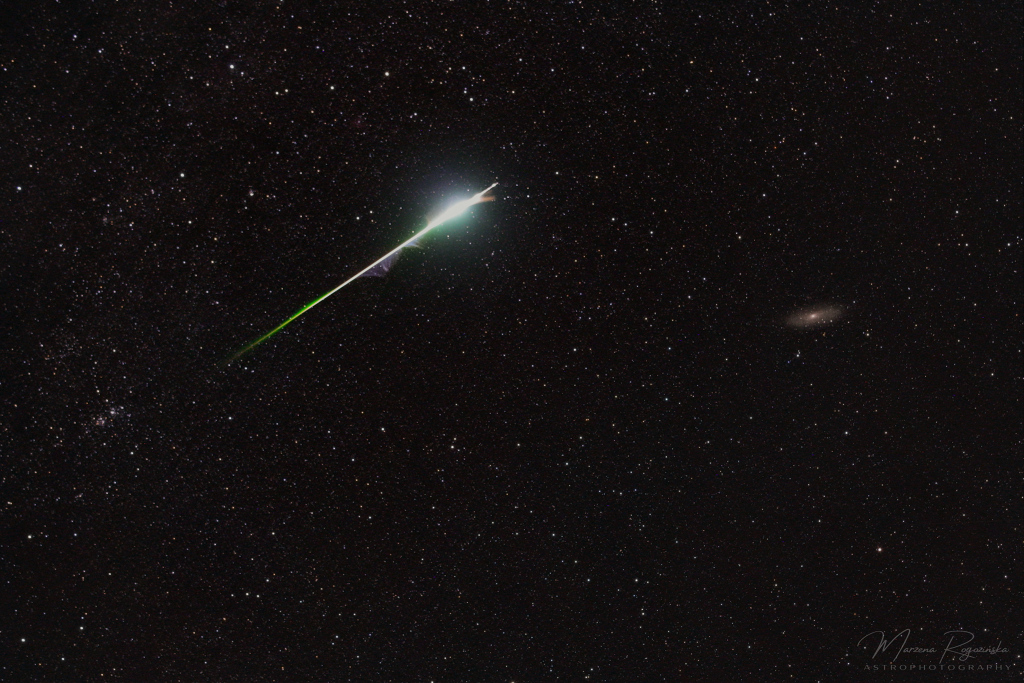2021年8月14日
Island Universe, Cosmic Sand
Image Credit & Copyright: Marzena Rogozinska
Explanation: Stars in our own Milky Way Galaxy are scattered through this eye-catching field of view. From the early hours after midnight on August 13, the 30 second exposure of the night sky over Busko-Zdroj, Poland records the colorful and bright trail of a Perseid meteor. Seen near the peak of the annual Perseid meteor shower it flashes from lower left to upper right. The hurtling grain of cosmic sand, a piece of dust from periodic comet Swift-Tuttle, vaporized as it passed through planet Earth’s atmosphere at almost 60 kilometers per second. Just above and right of center, well beyond the stars of the Milky Way, lies the island universe known as M31 or the Andromeda Galaxy. The Andromeda Galaxy is the most distant object easily visible to the naked-eye, about 2.5 million light-years away. The visible meteor trail begins only about 100 kilometers above Earth’s surface, though. It points back to the meteor shower radiant in the constellation Perseus off the lower left edge of the frame. Follow this bright perseid meteor trail below and left to the stars of NGC 869and NGC 884, the double star cluster in Perseus.
Notable APOD Image Submissions: Perseid Meteor Shower 2021
Tomorrow’s picture: cosmic ring
星系与宇宙沙粒
影像提供与版权: Marzena Rogozinska
说明: 在这幅8月13日清晨摄于波兰布斯科兹德鲁伊的30秒长曝光影像里,夜空有银河系的恒星及一颗曳着色彩缤纷的明亮流星痕之英仙流星。这颗出现在今年英仙流星雨极大期附近的流星,从左下向右上飞掠。来自周期彗星史威福-塔托的这颗飞驰宇宙沙粒,以将近每秒60公里高速穿过地球大气时,不停的汽化。在影像的中右上方,远在银河的恒星后方,可见到名为M31或仙女大星系的宇宙岛。约250万光年远的仙女大星系,是人类肉眼可见的最遥远天体。相较之下,这颗流星的流星痕起点在地表上方约100公里之处。这道流星痕回指影像左下缘之外,这群流星雨位在英仙座内的辐射点。此外,在这道明亮的流星痕的下端及其左侧附近,还可见到英仙双星团(NGC 869及NGC 884)的恒星。
值得注意的提交给APOD的图像:2021年英仙座流星雨
明日的图片: cosmic ring







